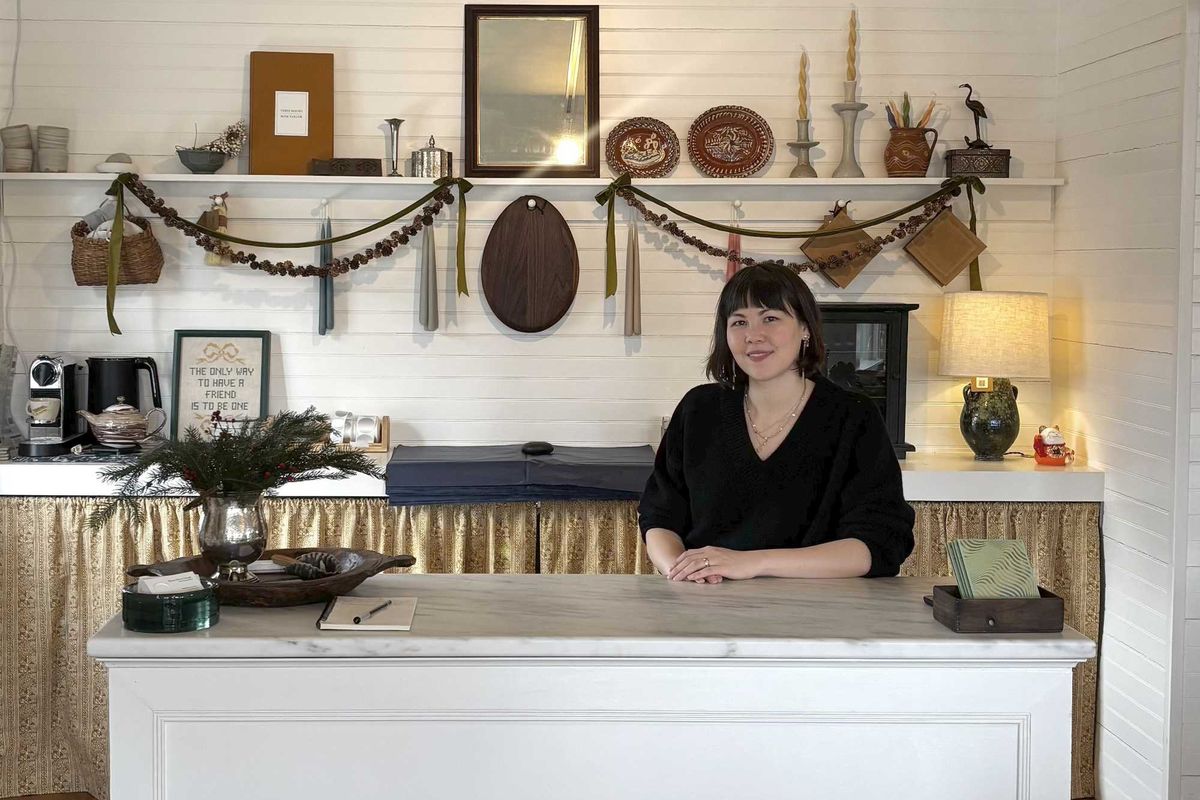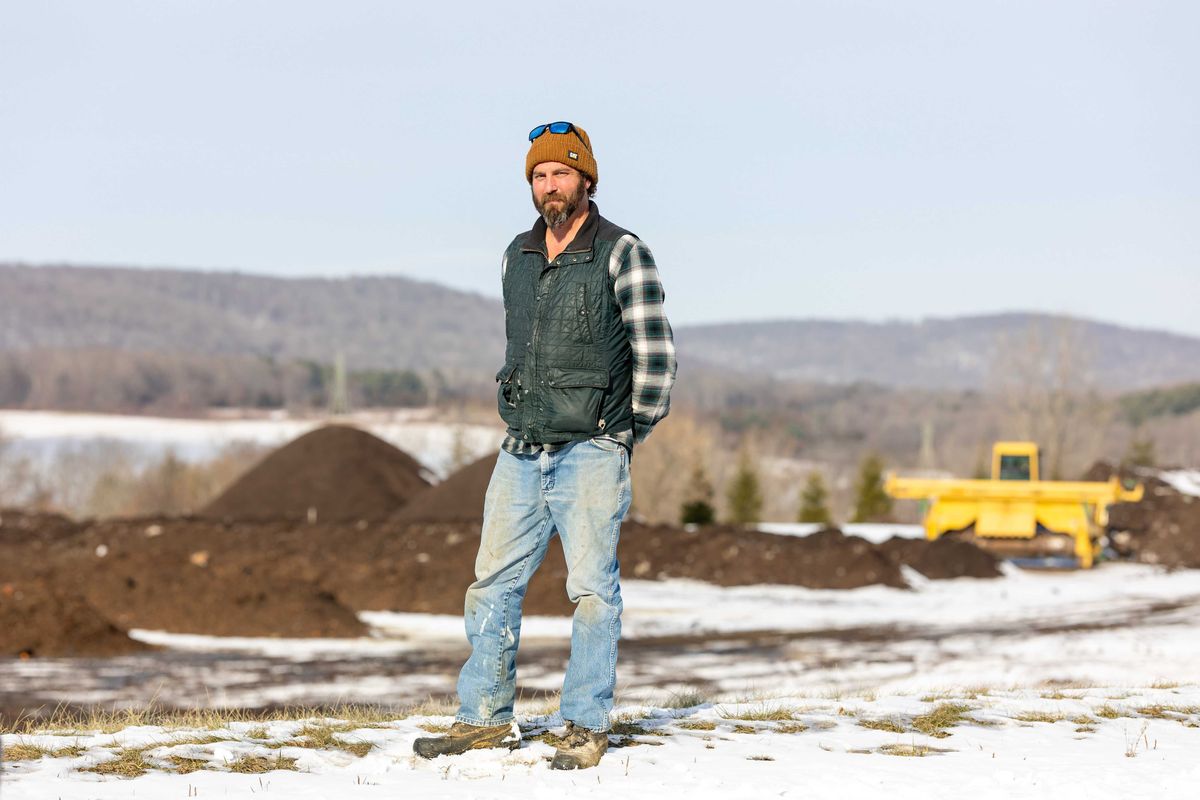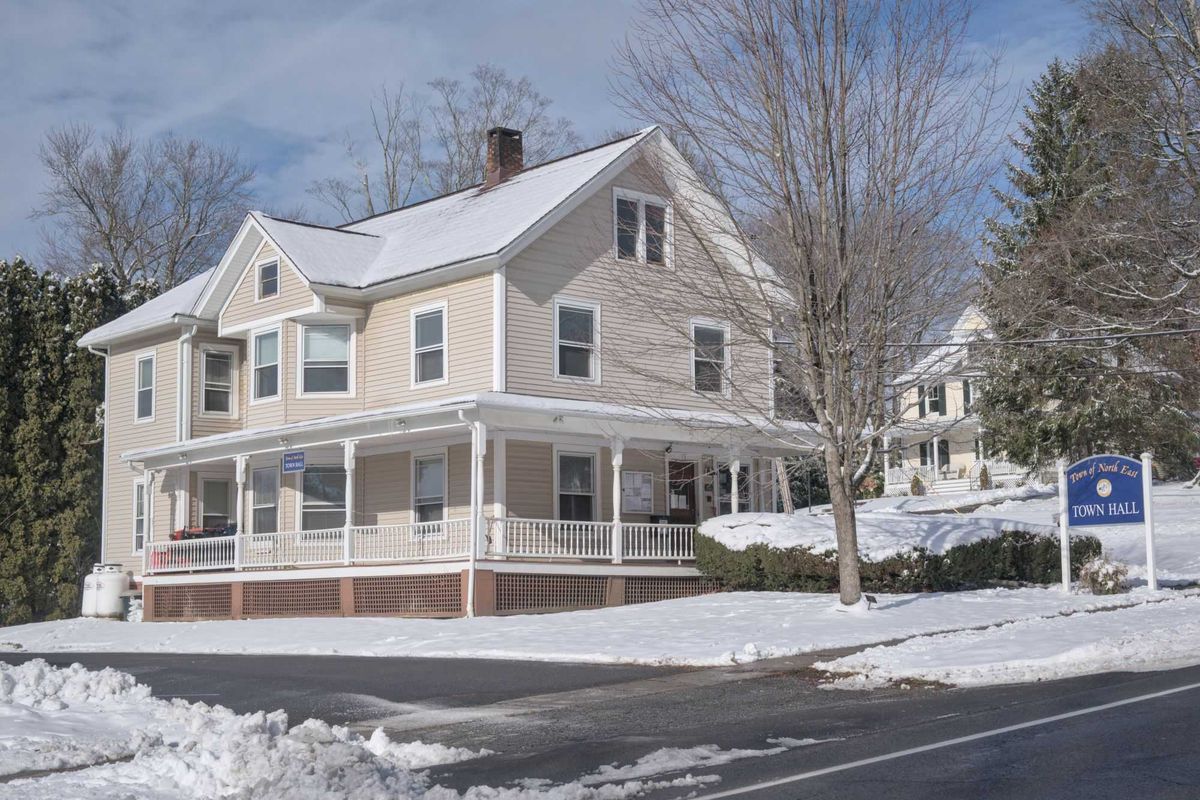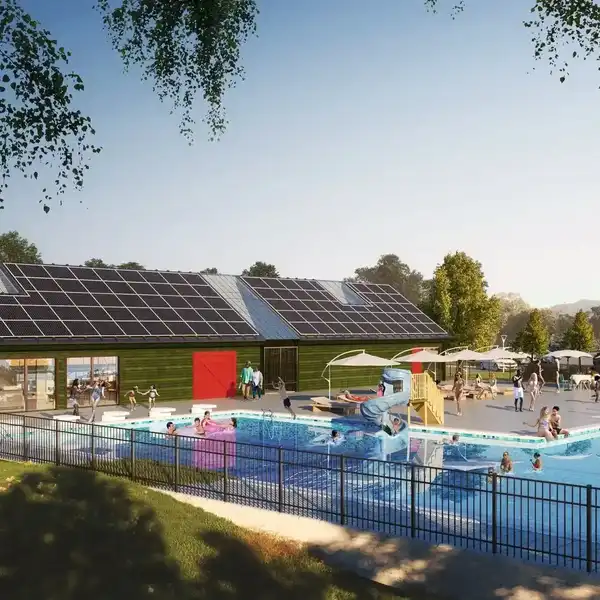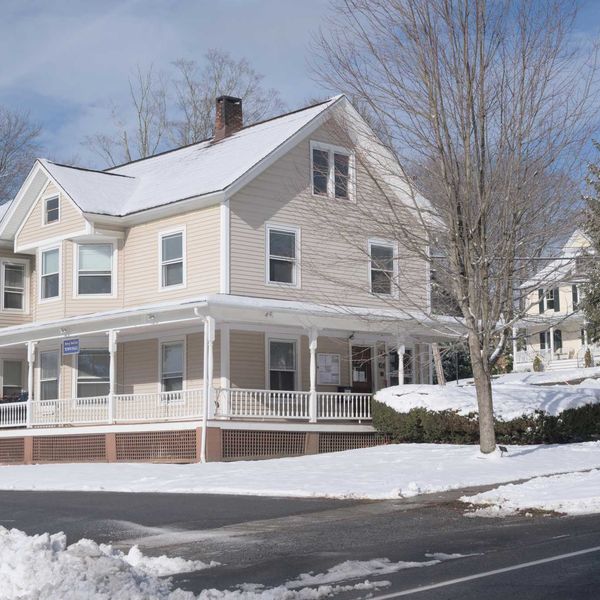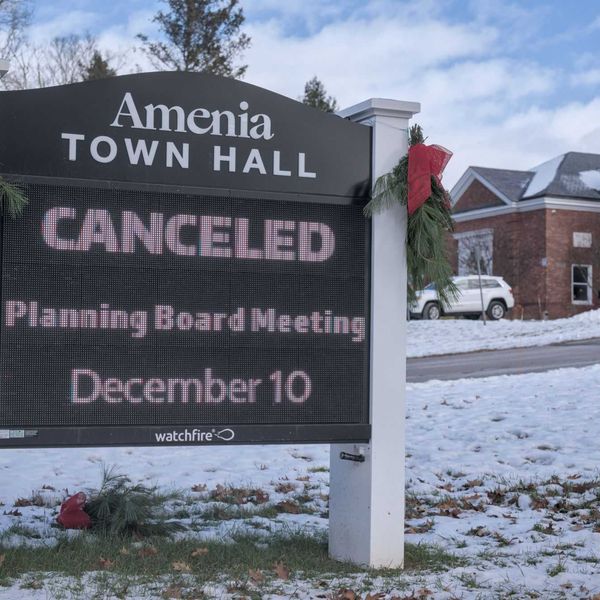Latest News
Sharon Hospital in Sharon, Connecticut.
Archive photo
SHARON — Northern Dutchess Paramedics will cease operating in northwest Connecticut at the start of the new year, a move that emergency responders and first selectmen say would replace decades of advanced ambulance coverage with a more limited service arrangement.
Emergency officials say the change would shift the region from a staffed, on-call advanced life support service to a plan centered on a single paramedic covering multiple rural towns, raising concerns about delayed response times and gaps in care during simultaneous emergencies.
The decision became known on Dec. 11 when communities were informed that NDP’s service would end as of Jan. 1, according to Andrea Downs, president of the Falls Village Volunteer Fire Department and an employee of the organization.
Founded in 1994 and based in Rhinebeck, New York, NDP has provided advanced and basic life support ambulance services to communities in Dutchess and Columbia counties in New York, as well as parts of Litchfield County, for nearly three decades.
How the change came about was outlined by Al Tortorella of Sharon, also an employee of NDP.
Tortorella said every Connecticut municipality is required to have an advanced life support provider. For the past 28 years, Sharon Hospital has fulfilled that requirement by signing an annual hospital-sponsored agreement with NDP. In recent years, the agreement was signed by Dr. Ronald Santos, head of the hospital’s emergency department, under whose medical license NDP operates.
When NDP recently approached Santos to renew the agreement, he said he could not sign it, a decision that took the organization by surprise, Tortorella said.
Area towns operate volunteer ambulance squads that provide basic life support. NDP supplements those crews by delivering advanced medical care, administering medications and conducting inter-facility transports.
Sharon Hospital, which is part of Nuvance Health, merged earlier this year with Northwell Health.
Downs and Tortorella said they understand that the hospital system plans to replace NDP with its own paramedic service.
Under the proposed arrangement, a single paramedic would cover the Sharon Hospital catchment area, starting each shift in New Milford before traveling to Sharon. If needed, the paramedic would be assisted by a paid EMT provided by Nuvance.
Tortorella sharply criticized the model. “It’s a system designed to fail,” he said. “This is a huge issue.”
Downs echoed those concerns, noting that the paramedic’s 12-hour shift would include significant travel time between locations. “I’m very concerned about the health and well-being of residents in the Northwest Corner,” she said. “We don’t want any reduction in services for patients in the region. I can’t understand the rationale of taking services away. Northwell wants to maintain a model of corporate health care, but they can’t put a face to the people and culture we’ve established here. We’re talking life and death.”
Downs emphasized that the decision does not involve layoffs at NDP, which was recently acquired by Empress. She said there is ample demand for paramedic services in New York state and that employees’ jobs are secure. The concern, she said, is for the safety of families, friends and neighbors in Northwest Connecticut.
In an interview, Sharon Hospital President and CEO Christina McCulloch and Andrea Rynn, assistant vice president for community, government and public relations at Northwell Health, addressed the decision to discontinue the hospital-sponsored agreement with NDP.
“Recently, concerns were brought to our attention about compliance and [a lack of] communications,” they said. “This information left us unsettled and unable to be a sponsoring hospital at this time.”
They acknowledged that the timing of the transition was far from ideal. “Despite the tight timing, we are actively developing a coverage plan in concert with local first responders and area leaders. This is a process that is just beginning and we are confident it will strengthen over time.”
McCulloch and Rynn said the hospital and health system remain committed to maintaining service continuity and working with community partners to enhance emergency medical services across the region.
Keep ReadingShow less
Max Amsterdam reaches out to pet a red panda at the Trevor-Lovejoy Zoo on Millbrook School’s campus on Wednesday, Dec. 17. Amsterdam is a senior at Millbrook School and serves as the zoo’s head student curator.
Photo by Aly Morrissey
MILLBROOK — The Trevor-Lovejoy Zoo announced this month that it has received a $5 million donation — the largest in the organization’s history and made anonymously — that will primarily fund a state-of-the-art animal hospital, a key feature of the zoo’s current master plan for expansion. The zoo, which is located at the Millbrook School, currently houses 180 exotic animals from all over the world.
“It’s very exciting,” said Nancy Stahl, who oversees fundraising for the zoo. “This gift is going to enhance everything we already do and enable us to increase opportunities for science, our community and support the well-being of our animals.”
Stahl said the zoo has been engaged in a long-range master planning process for several years as part of preparing for its next Association of Zoos and Aquariums accreditation review in 2027. “We knew we had to make a plan and look toward the future,” Stahl said. “We had to think about what more we could be doing for the animals, for students and for the community.”
Construction is nearing completion on a new animal holding barn, the first step toward housing off-exhibit animals. Funded by philanthropist Barbara Tober — whom Stahl described as the project’s “catalyst” — the facility is required under AZA accreditation standards. The holding barn will serve as a first stop for new animals required to quarantine before entering an exhibit. It will also safely house animals when enclosures are being repaired or when they need rehabilitation.
The new animal hospital, which zoo staff are referring to as an animal wellness center, is poised to be four times larger than the existing space. Stahl said the team is looking forward to dramatically expanding the zoo’s ability to treat animals on campus, eliminating the need to transport them off-site for procedures like X-rays or ultrasounds.

Stahl said a primary goal of the master plan and the animal wellness center is to “bring the outside in.” The public will be allowed to watch certain procedures and operations to learn more about the veterinary work that goes on behind the scenes.
In addition to the zoo’s around-the-clock staff, rotating veterinarians visit the zoo each week to check on the animals and perform routine procedures. The current space is limited, and zoo staff are eager to have an expanded footprint.
“Right now we’re very limited space-wise,” Stahl said. “This new facility will let us have more space, more vets and more learning happening.”
Max Amsterdam has lived at the Millbrook School as a boarding student for four years and has held a working role at the zoo throughout that time. Today, in his senior year, he serves as the zoo’s head student curator — a coveted leadership role that requires a formal application and selection process.
When Amsterdam first applied to Millbrook School, the zoo was not front-of-mind. Although he wanted to become a veterinarian as a young child, the desire dissipated until he set foot in the Trevor-Lovejoy Zoo as a freshman.
“I watched a senior perform a biopsy on a red wolf that had passed away from a uterine tumor,” Amsterdam said. “I didn’t even know that students could do that. I realized right then how incredible this place was and the zoo became my thing.”
Over his four years at Millbrook, Amsterdam has assisted veterinarians, shadowed medical procedures, conducted necropsies and even traveled with staff to national AZA conferences. “As you grow, you gain a relationship with the staff and vets, and when they know you can handle it, they let you do more,” he said.
With graduation on the horizon and plans to study biology at Bucknell, Amsterdam admits he’s a little jealous of the future students that will benefit from the new zoo facilities.
At the end of the day, he is grateful for the hands-on experience he has received in his leadership roles at the zoo. Millbrook School is the only high school in the country with an AZA-accredited zoo on its campus.
“I’m jealous, but I’m also so grateful that the zoo got that donation because it’s needed,” Amsterdam smiled. “We deserve it, too. It’s a lot of hard work by the staff and students — it’s 200% effort seven days a week, and not many people see that.”
Keep ReadingShow less
AMENIA — Residents can now take advantage of a local recycling program that offers convenient home pickup for textiles and other household items. The program, approved by Dutchess County, was outlined by Town Board member and Town Supervisor-elect Rosanna Hamm.
The service, operated by Helpsy, accepts unwanted clothing, footwear, textiles, accessories and linens, along with items such as luggage and stuffed animals. According to the Environmental Protection Agency, only about 17% of recyclable textiles are currently reclaimed, with the rest ending up in landfills or municipal incinerators.
By providing free home pickup, the program is expected to reduce disposal tonnage and tipping fees, saving the town money while also conserving resources and saving residents time.
Items should be placed in plastic bags on front steps for pickup on collection day. All items must be clean, dry and odor-free.
Accepted items include all types of footwear — from slippers and sneakers to dress shoes, boots and cleats — as well as clothing such as outerwear, tops, dresses, pajamas, underwear and baby clothes. Accessories include hats, purses, bathrobes and jewelry. Linens include bed linens, curtains, drapes, table linens, quilts, blankets and comforters. Miscellaneous items such as luggage, sports jerseys and stuffed animals are also accepted.
Founded in 2017, Helpsy now operates in 10 states, managing more than 1,200 collection points and providing home pickup for millions of residents. The organization has diverted more than 75,000 tons of textiles from the waste stream, saving municipalities millions of dollars in disposal costs while generating funding for charitable organizations and thrift stores.
For residents who would prefer to deliver items to a drop-off bin, the closest bin is in Wingdale at Drop and Lock, 1371 Route 22. For more information, go to www.helpsy.com/ameniany or phone (800) 244-6350.
Keep ReadingShow less
Photo by Leila Hawken
The Upstate Celtic Allstars brought holiday cheer at their third annual concert at the Amenia Town Hall on Saturday, Dec. 20. The five-member ensemble included, left to right, Ambrose Verdibello, fiddle; Isa Simon, fiddle and vocals; Claudine Langille, vocals and banjo; Joseph Sobol, citern; and Dave Paton, concertina and dulcimer.
loading


